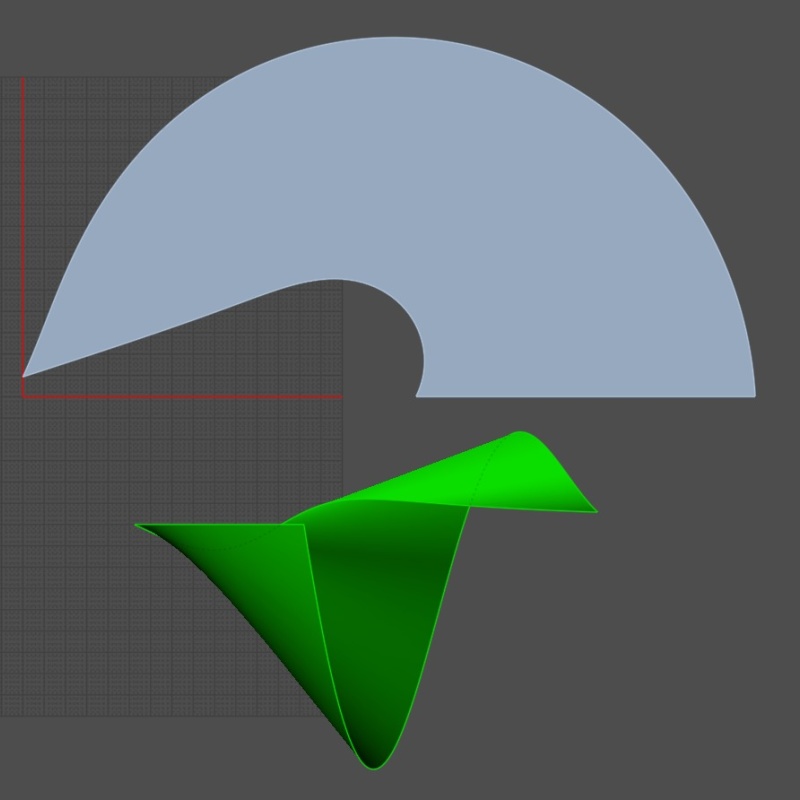After much study, the ASWT was re-modeled.
The blade Surface, formed in Moi, is "developable", and so can be Unrolled, (in Rhino 8), to a flat pattern with little or no distortion.
The blade Surface 3dm file was opened in Rhino 8, and the Unroll command was used to create a flat pattern.
The Flattened area was 2.3% greater than the blade surface area. Increase in "u" isocurve density in Rhino 8 made no visible difference.
No way to increase the "v" isocurve density was found.
The Rhino 9 Unroll command is very slow, perhaps 5 to 10 minutes. First it calculates the before and after Area, to give an idea of "distortion".
It was difficult for this novice Rhino 8 user to find the desired commands and settings, but some progress was finally achieved.
The blade is formed using an Archimedean spiral as a tapered Helix rail. The Helix is formed with the MoI Helix command, and tapers from maxRadius to zero.
The core cylinder region, "~shaft", is deleted from the blade.
The blade Surface is NOT an Archimedean tapered screw, nor a portion of a Toroid, due to the "open radius of theta = 60 degrees region", and how the two rails are swept.
(The rail spiral is NOT "logarithmic", nor "fibonacci".)
I may do a script or node, including updated "optimum" parameters, values and definitions.
And also check out how the actual degrees of the 3 blades, measured at a plane intersection, compare to the 60 degree, 45 degree, 30 degree (better) style.
- Brian
